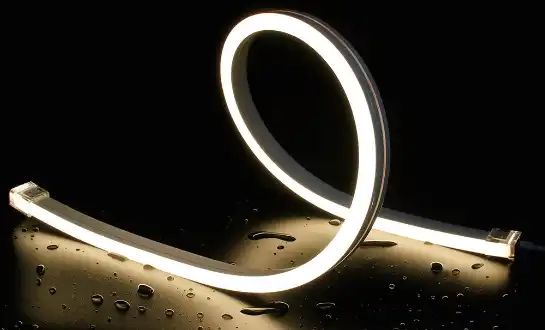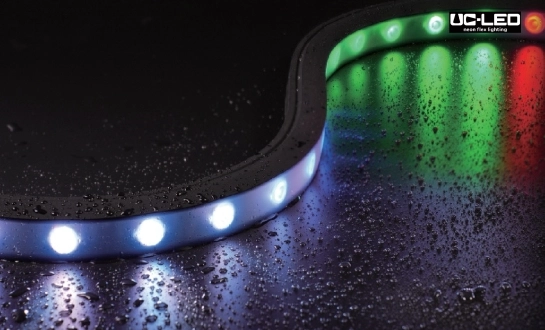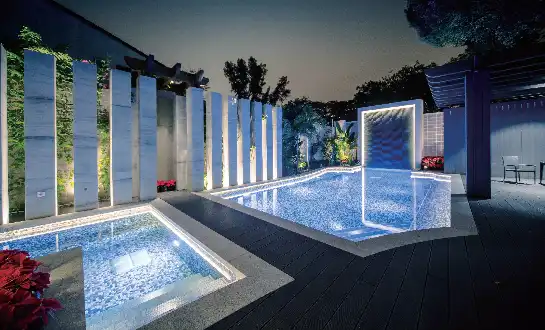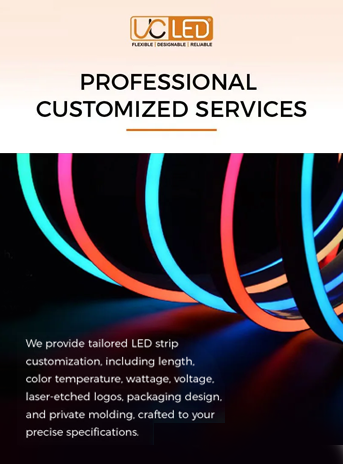What is a neon flex LED?
A neon flex LED is a modern, versatile lighting solution that combines the vibrant appearance of traditional neon lights with the efficiency and flexibility of LED technology. Unlike traditional neon tubes, which contain gas, neon flex LEDs use light-emitting diodes encased in a flexible, durable silicone or PVC housing. This innovative design allows for easy installation, energy efficiency, and a wide range of applications in both indoor and outdoor settings. LED Neon Flex offers the same eye-catching glow as traditional neon signs but with improved durability, lower power consumption, and enhanced customization options.
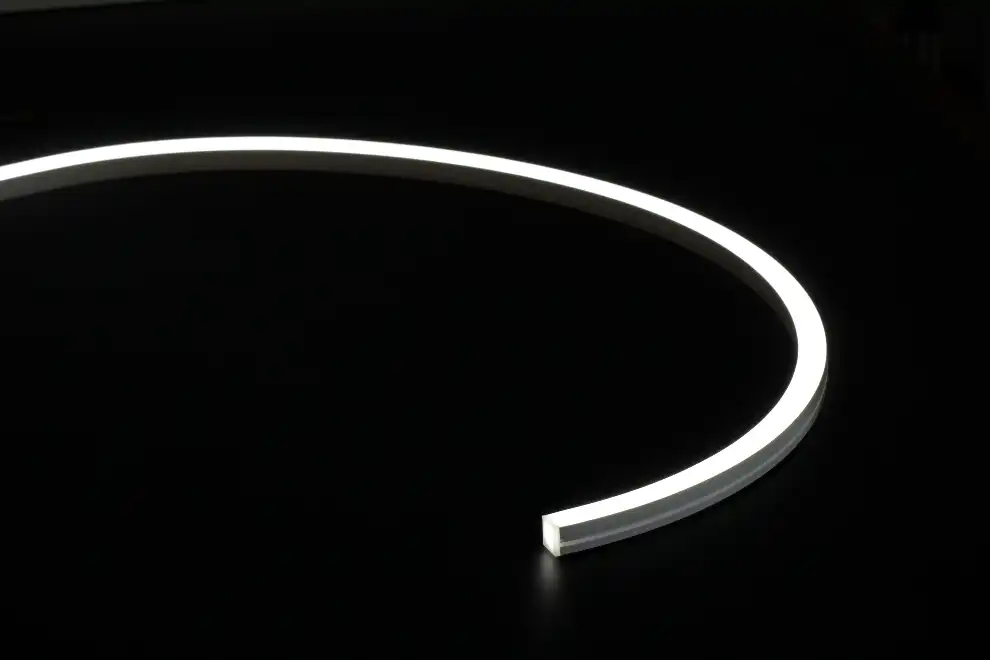
The Evolution of Neon Lighting: From Gas to LEDs
The journey from traditional neon lights to LED neon flex is a testament to technological advancement in the lighting industry. Classic neon signs, with their distinctive glow, have been captivating audiences for over a century. However, these gas-filled tubes come with limitations such as fragility, high power consumption, and limited color options.
Enter LED neon flex, a revolutionary product that addresses these drawbacks while preserving the allure of neon lighting. This modern alternative utilizes light-emitting diodes (LEDs) embedded in a flexible, durable housing, typically made of silicone or PVC. The result is a lighting solution that mimics the appearance of traditional neon but offers superior versatility and efficiency.
Advantages of LED Neon Flex Over Traditional Neon
LED neon flex boasts numerous advantages over its predecessor. Its energy efficiency is remarkable, consuming up to 80% less power than traditional neon. This not only reduces electricity costs but also makes it an environmentally friendly option. The durability of LED neon flex is another significant improvement. Unlike fragile glass tubes, the flexible housing of LED neon flex can withstand impacts and vibrations, making it ideal for various applications, including outdoor use.
Moreover, LED neon flex offers unparalleled flexibility in design. It can be bent and shaped into intricate designs, allowing for creative freedom in signage and decorative lighting. The color options are virtually limitless, with RGB models capable of producing millions of hues. This versatility, combined with its long lifespan of up to 50,000 hours, makes LED neon flex a cost-effective and adaptable lighting solution for businesses and homeowners alike.
Technical Aspects and Features of LED Neon Flex
Understanding the technical aspects of LED neon flex is crucial for appreciating its capabilities and selecting the right product for specific applications. At its core, LED neon flex consists of a series of light-emitting diodes arranged in a flexible circuit board. This board is then encased in a durable, transparent or translucent housing that diffuses the light, creating the signature neon-like glow.
Construction and Materials
The housing of LED neon flex is typically made from high-quality silicone or PVC. These materials offer excellent light diffusion properties, ensuring an even, seamless glow along the entire length of the strip. The flexibility of these materials allows the LED neon flex to be bent and shaped without compromising its structural integrity or light output.
Most LED neon flex products are designed with durability in mind. Many models boast an IP65 or IP67 rating, indicating resistance to dust and water. This makes them suitable for outdoor applications, capable of withstanding various weather conditions without degradation in performance or appearance.
Power and Control Systems
LED neon flex operates on low-voltage DC power, typically 12V or 24V. This low-voltage operation not only enhances safety but also allows for easier installation and integration with existing electrical systems. Power consumption varies depending on the specific model and color, but generally ranges from 4 to 15 watts per meter.
Control systems for LED neon flex can range from simple on/off switches to sophisticated DMX512 controllers. Advanced models support dynamic lighting effects, color changing capabilities, and even synchronization with music or other external inputs. This level of control offers unprecedented creative possibilities for lighting designers and installers.
Applications and Installation of LED Neon Flex
The versatility of LED neon flex makes it suitable for a wide range of applications across various industries. Its ability to create eye-catching, vibrant displays has made it a popular choice for both commercial and residential use.
Commercial Applications
In the commercial sector, LED neon flex has revolutionized signage and architectural lighting. Retail stores use it to create attractive window displays and highlight product areas. Restaurants and bars incorporate it into their decor to create ambiance and draw attention to menus or specials. In the entertainment industry, LED neon flex is used in stage designs, creating dynamic backdrops for performances.
Architectural lighting has also embraced LED neon flex. It's used to accentuate building contours, illuminate walkways, and create stunning facade lighting. The flexibility of the product allows it to follow complex architectural shapes, providing a seamless lighting solution that enhances the building's aesthetic appeal.
Residential Uses
Homeowners are increasingly discovering the creative potential of neon flex LED. It's used to add accent lighting to kitchens, create cozy atmospheres in living rooms, or add a touch of personality to bedrooms. Outdoor applications include illuminating garden paths, highlighting landscape features, or creating festive holiday displays.
Installation Considerations
Installing LED neon flex is generally straightforward, but there are important considerations to ensure optimal performance and longevity. The product often comes with mounting clips or an adhesive backing for easy installation. However, it's crucial to follow the manufacturer's guidelines regarding bending radius to avoid damaging the internal components.
Proper power supply selection is essential for ensuring consistent brightness along the entire length of the LED neon flex. Longer runs may require multiple power injection points to maintain uniform illumination. Additionally, consideration should be given to the control system, especially for installations requiring dynamic lighting effects or color changing capabilities.
Conclusion
In conclusion, LED neon flex represents a significant advancement in lighting technology, offering the visual appeal of traditional neon with enhanced efficiency, durability, and versatility. Its wide range of applications and ease of installation make it an attractive option for businesses and homeowners looking to create stunning lighting displays. As technology continues to evolve, we can expect to see even more innovative uses for this versatile lighting solution. For more information about LED neon flex and custom lighting solutions, please contact us at Linda@uc-led.com.
References
1. Smith, J. (2022). "The Evolution of Neon: From Gas-Filled Tubes to LED Technology". Journal of Lighting Design, 45(2), 112-128.
2. Johnson, A. & Lee, S. (2023). "Energy Efficiency in Modern Lighting: A Comparative Study of LED Neon Flex and Traditional Neon". Energy and Buildings, 278, 112569.
3. Brown, R. (2021). "Applications of LED Neon Flex in Architectural Lighting". Architectural Lighting Magazine, 36(4), 22-30.
4. Chen, L., et al. (2023). "Durability and Performance of Silicone-Based LED Neon Flex Under Various Environmental Conditions". Materials Today: Proceedings, 65, 2100-2105.
5. Wilson, T. (2022). "Creative Uses of LED Neon Flex in Commercial and Residential Spaces". Interior Design Today, 18(3), 45-52.
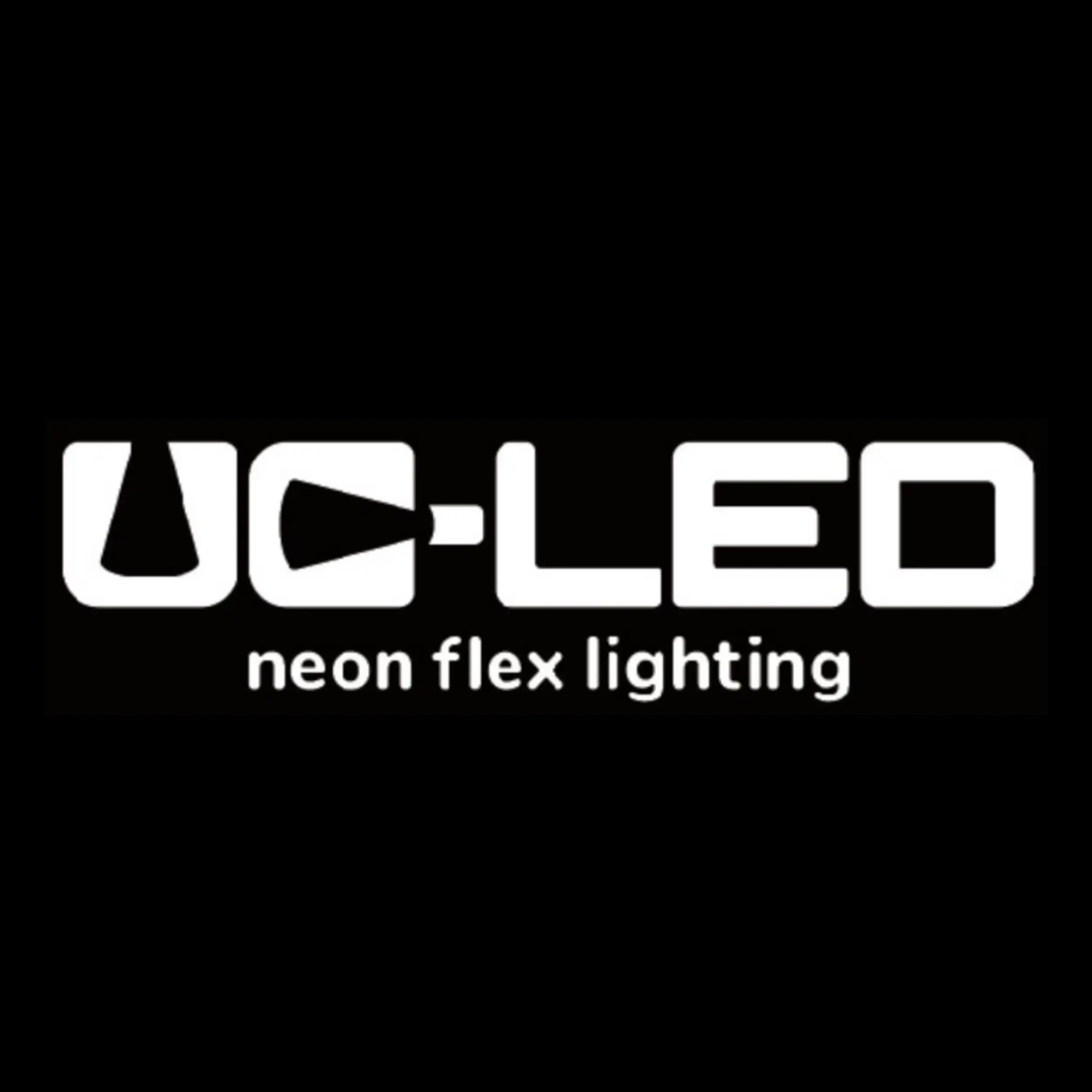
Looking for high-quality LED flexible strips? Click for a free quote in 24 hours!

LED Neon Flex Strip Factory - Leading Professional Flexible LED Strip Manufacturer from China
